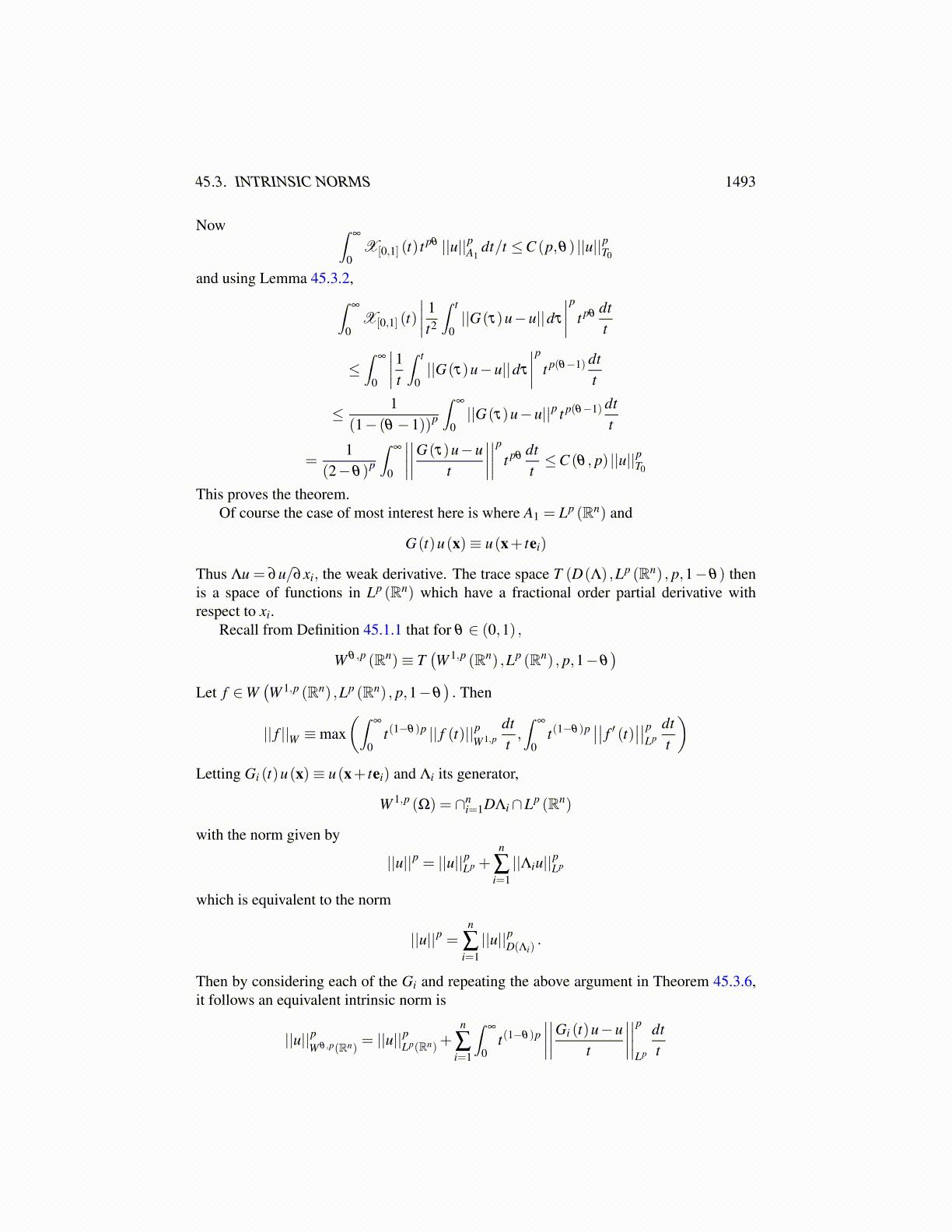
45.3. INTRINSIC NORMS 1493
NowG(t)gr (0)−gr (0)
t=
1t
∫ t
0g′r (s)ds− 1
t
∫ t
0G(t− s)hr (s)ds
and so using the assumption that G(t) is uniformly bounded,∣∣∣∣∣∣∣∣G(t)gr (0)−gr (0)t
∣∣∣∣∣∣∣∣≤ 1t
∫ t
0
∣∣∣∣g′r∣∣∣∣A1+M ||hr||A1
≤ 1t
∫ t
0
∣∣∣∣g′r∣∣∣∣(M+1)+M ||Λgr||ds
≤ M+1t
∫ t
0
∣∣∣∣g′r∣∣∣∣A1+ ||gr||D(Λ) ds
Therefore, from Lemma 45.3.2∫∞
0t pθ−p ||G(t)gr (0)−gr (0)||pA1
dtt
=∫
∞
0t pθ
∣∣∣∣∣∣∣∣G(t)gr (0)−gr (0)t
∣∣∣∣∣∣∣∣pA1
dtt
≤∫
∞
0t pθ
∣∣∣∣M+1t
∫ t
0
∣∣∣∣g′r∣∣∣∣A1+ ||gr||D(Λ) ds
∣∣∣∣p dt/t
≤ (M+1)p 2p−1(
11−θ
)p ∫ ∞
0t pθ
(∣∣∣∣g′r∣∣∣∣pA1+ ||gr||pD(Λ)
)Now since gr → f in W, it follows from Lemma 44.1.8 that gr (0)→ u in T and hence byTheorem 44.1.9 this also in A1. Therefore, using Fatou’s lemma in the above along withthe convergence of gr to f ,∫
∞
0t pθ−p ||G(t)u−u||pA1
dtt
≤ (M+1)p 2p−1(
11−θ
)p ∫ ∞
0t pθ
(∣∣∣∣ f ′∣∣∣∣pA1+ || f ||pD(Λ)
)≤ (M+1)p 2p−1
(1
1−θ
)p (||u||pT +δ
)Since u ∈ T, Theorem 44.1.9 implies u ∈ A1 and ||u||A1
≤C ||u||T . Therefore, since δ wasarbitrary, this has shown that u ∈ T0 and
||u||T0≤C (θ , p) ||u||T .
This shows T ⊆ T0 with continuous inclusion.Now it is necessary to take u ∈ T0 and show it is in T. Since u ∈ T0
∞ > ||u||pA1+∫
∞
0tθ p∣∣∣∣∣∣∣∣G(t)u−u
t
∣∣∣∣∣∣∣∣p dtt≡ ||u||pT0